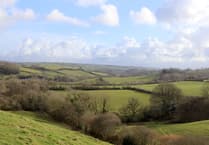DEFRA, the Department for Food and Rural Affairs and the Environment Agency has announced that 96 per cent of bathing waters in England have met minimum standards, with 90 per cent of bathing waters in England being rated as "good" or "excellent", continuing to show an overall boost in water quality over the last decade.
This compares to just 28 per cent being rated as "good" or "excellent" in the 1990s and 76 per cent in 2010.
The results, published on December 1, follow testing at more than 400 sites regularly used by swimmers throughout the summer.
These tests, carried out by the Environment Agency, monitor for sources of pollution known to be a risk to bathers’ health, specifically E coli and intestinal enterococci.
Defra and the Environment Agency say that the substantial improvements seen over the last 30 years come as the Government continues to take action to boost water quality through the Plan for Water.
This will help drive investment, bring in stronger regulation, and toughen enforcement to tackle pollution and further clean up our waterways and bathing waters.
This includes a £1.7 billion accelerated investment to reduce sewage spills from storm overflows.
Environment Agency Chair Alan Lovell said: “Many people enjoy time in or on lakes, rivers and coastal waters, and we know the value they bring in terms of social, health and wellbeing benefits.
“While overall bathing water quality has improved over the last decade due to targeted investment, robust regulation from the Environment Agency and work carried out by partners, these results show there is significant work still to do to ensure the quality of our bathing waters is increasing every year.
“The slight fall in standards this year show we must go further to drive improvements and that this takes time and investment.
"That’s why we are strengthening our regulation and working with the water sector, farmers, industry and others to help them put the environment the heart of their activities and improve our bathing waters for all.”
While bathing water quality has improved during the past few decades, standards have fallen slightly in the last year, likely in part due to an unseasonably wet summer causing run off.
Other complex factors which influence bathing water quality can include tides, and physical or environmental changes at a site, with every catchment affected differently.
Last year’s statistics showed that 97 per cent met the minimum standard of Sufficient, while 93 per cent met the highest standards of Good and Excellent.
Water Minister Robbie Moore said: “Our bathing waters have improved significantly in recent years, and we are fully committed to seeing the quality of our coastal waters, rivers and lakes rise further for the benefit of the environment and everyone who uses them.
“Our Plan for Water is delivering more investment, stronger regulation and tougher enforcement to clean up our waterways and continue to improve our bathing waters.
“We have also set stringent targets for water companies to reduce sewage spills from storm overflows which frontloads action at designated bathing waters to make the biggest difference to these sites as quickly as possible.”
Measures to improve water quality include:
• Setting strict targets for water companies to reduce the impact of storm overflows. This has led to the largest infrastructure programme in water company history with £60 billion to be invested over the next 25 years, preventing hundreds of thousands sewage overflows every year.
• Significant new investments to improve water quality at bathing waters, ramping up the investment from the last price control to improve hundreds of storm overflows across the country, and investment to install thousands of new state of the art water quality monitors across the country.
• Supporting farmers to reduce water pollution and an increase in agricultural regulation, including doubling funding for free face-to-face support on reducing water pollution to all farmers in England. The Environment Agency carried out more than 4,000 farm inspections across England last year, helping farmers comply with legal requirements and resulting in more than 5,000 actions undertaken to improve farm practices and drive improvements to our environment.
On the back of the latest results, the Environment Agency is working with local authorities to take targeted action at all bathing water classified as "poor".
During the past 30 years the Environment Agency has directed £30 billion of water company investment in sewerage improvements and other measures to improve and protect water quality.
At Porthleven in Cornwall, the bathing water site was classified as "good" in 2022, but achieved "excellent" this year.
The Environment Agency worked with South West Water to identify misconnections in the local sewerage system, which the company then fixed.
More than 400 bathing water sites in England were sampled this year.
The classifications and information about water quality will be displayed at each bathing water site and on bathing water profiles available to access on the Environment Agency’s Swimfo website.




